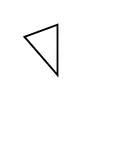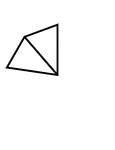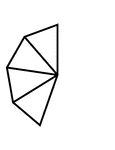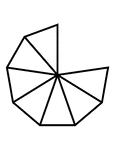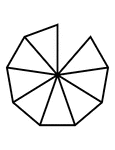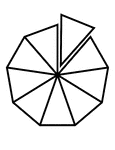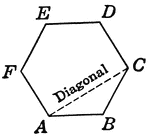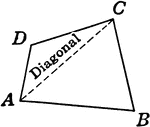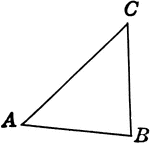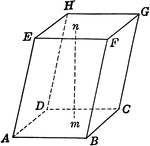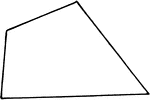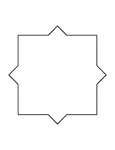
Irregular Convex Polygon
Illustration of an irregular convex polygon with 16 sides that has symmetry. It could be used to show…

Transfer Polygon
"ABCD to a new base A'B'. With radii AC and BC describe intersection arcs from centers A'B', locating…

Equiangular Polygons
Illustration of a two polygons. Polygons may be mutually equiangular without being mutually equilateral.

Equilateral Polygons
Illustration of two polygons. Polygons may be mutually equilateral without being mutually equiangular…
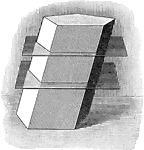
Sections of Prism
Illustration of the sections of a prism made by parallel planes cutting all the lateral edges into equal…
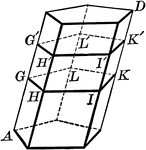
Sections of Prism
Illustration of the sections of a prism made by parallel planes cutting all the lateral edges into equal…

Prismatoid With Triangular Faces
An illustration of a prismatoid with triangular faces and points labeled.

Equal Prisms
Illustration showing two prisms are equal if the three faces which include a trihedral angle of the…
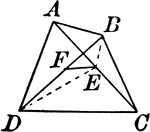
Quadrilateral With Diagonals and Midpoints Joined
Quadrilateral with intersecting diagonals and segment connecting midpoints.
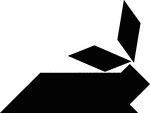
Rabbit Lieing Down
Tangrams, invented by the Chinese, are used to develop geometric thinking and spatial sense. Seven figures…
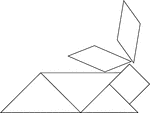
Rabbit Lieing Down
Tangrams, invented by the Chinese, are used to develop geometric thinking and spatial sense. Seven figures…
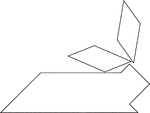
Rabbit Lying Down
Tangrams, invented by the Chinese, are used to develop geometric thinking and spatial sense. Seven figures…
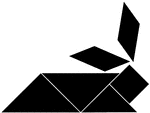
Rabbit Lying Down
Tangrams, invented by the Chinese, are used to develop geometric thinking and spatial sense. Seven figures…

Rabbit Siting on Its Hind Legs
Tangrams, invented by the Chinese, are used to develop geometric thinking and spatial sense. Seven figures…

Rabbit Siting on Its Hind Legs
Tangrams, invented by the Chinese, are used to develop geometric thinking and spatial sense. Seven figures…

Rabbit Siting on Its Hind Legs
Tangrams, invented by the Chinese, are used to develop geometric thinking and spatial sense. Seven figures…

Rabbit Siting on Its Hind Legs
Tangrams, invented by the Chinese, are used to develop geometric thinking and spatial sense. Seven figures…
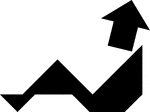
Reclining Man Facing Left
Tangrams, invented by the Chinese, are used to develop geometric thinking and spatial sense. Seven figures…
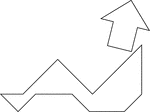
Reclining Man Facing Left
Tangrams, invented by the Chinese, are used to develop geometric thinking and spatial sense. Seven figures…

Reclining Man Facing Left
Tangrams, invented by the Chinese, are used to develop geometric thinking and spatial sense. Seven figures…

Reclining Man Facing Left
Tangrams, invented by the Chinese, are used to develop geometric thinking and spatial sense. Seven figures…
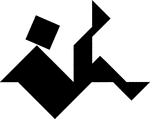
Reclining Man Facing Right
Tangrams, invented by the Chinese, are used to develop geometric thinking and spatial sense. Seven figures…
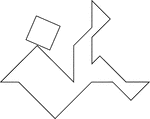
Reclining Man Facing Right
Tangrams, invented by the Chinese, are used to develop geometric thinking and spatial sense. Seven figures…

Reclining Man Facing Right
Tangrams, invented by the Chinese, are used to develop geometric thinking and spatial sense. Seven figures…
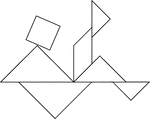
Reclining Man Facing Right
Tangrams, invented by the Chinese, are used to develop geometric thinking and spatial sense. Seven figures…

Rectangle
Tangrams, invented by the Chinese, are used to develop geometric thinking and spatial sense. Seven figures…

Rectangle
Tangrams, invented by the Chinese, are used to develop geometric thinking and spatial sense. Seven figures…

Rectangle
Tangrams, invented by the Chinese, are used to develop geometric thinking and spatial sense. Seven figures…

Rectangle
Tangrams, invented by the Chinese, are used to develop geometric thinking and spatial sense. Seven figures…

Rhombus
Tangrams, invented by the Chinese, are used to develop geometric thinking and spatial sense. Seven figures…

Rhombus
Tangrams, invented by the Chinese, are used to develop geometric thinking and spatial sense. Seven figures…

Rhombus
Tangrams, invented by the Chinese, are used to develop geometric thinking and spatial sense. Seven figures…

Rhombus
Tangrams, invented by the Chinese, are used to develop geometric thinking and spatial sense. Seven figures…

Right Triangle
Tangrams, invented by the Chinese, are used to develop geometric thinking and spatial sense. Seven figures…

Right Triangle
Tangrams, invented by the Chinese, are used to develop geometric thinking and spatial sense. Seven figures…
